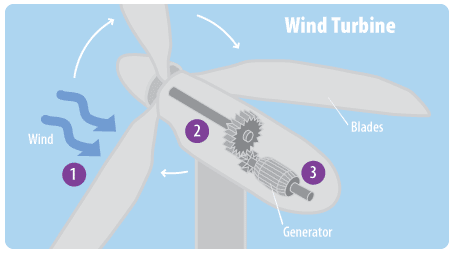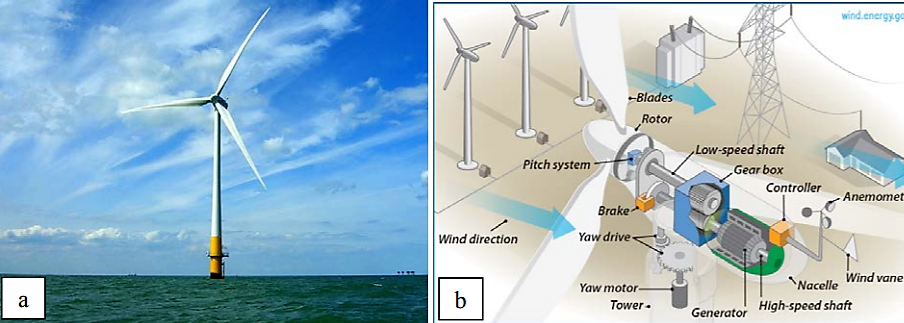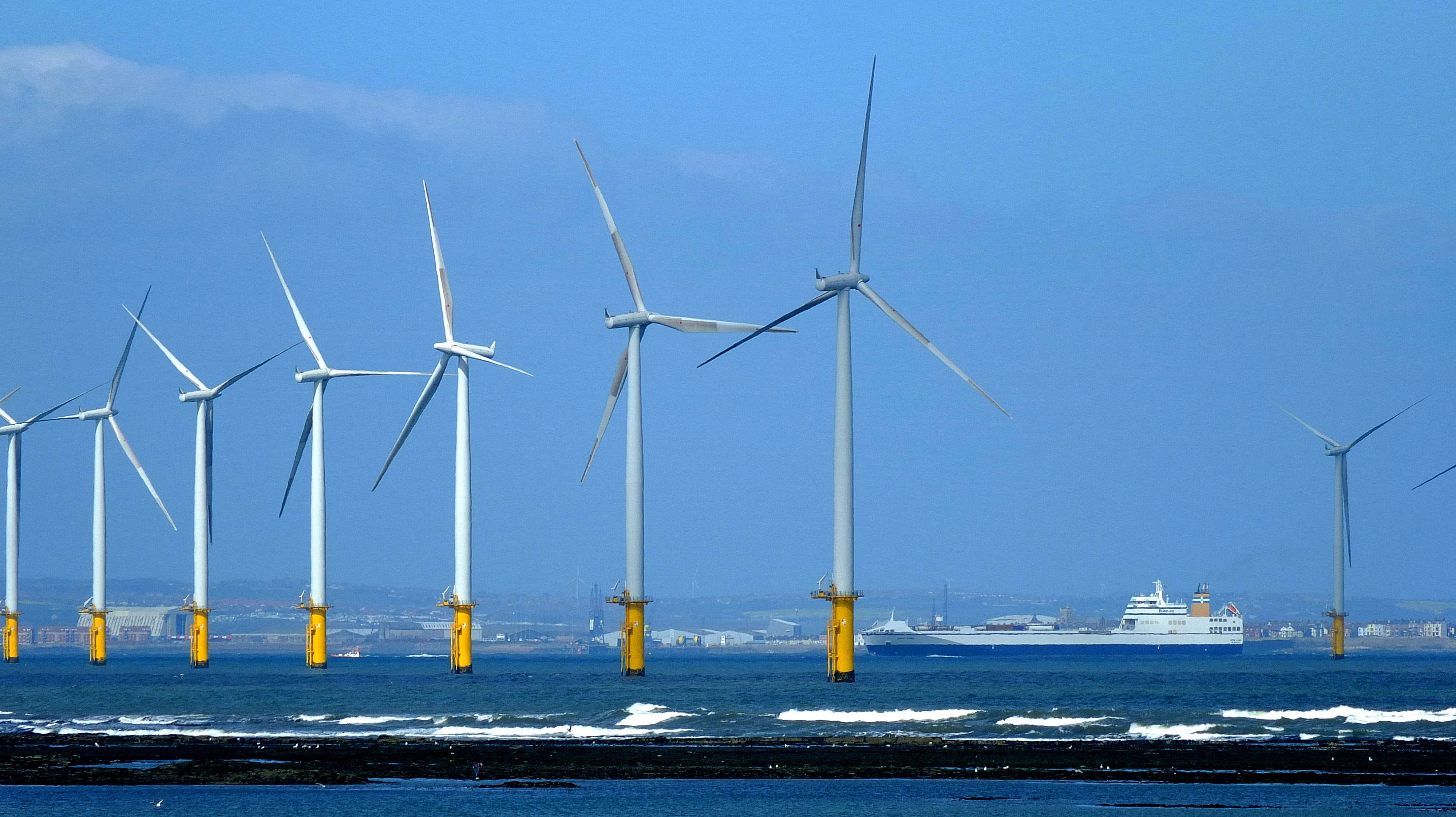Section outline
-
-
Winds are caused by rotation of the earth, heating of the atmosphere by the sun, and earth’s surface irregularities. Wind is the source of energy for wind power.
Wind has been used for power for centuries. For example, windmills were used to grind grain and pump water. Sailing ships traveled by wind power long before ships were powered by fossil fuels.
Wind turbines are a simple system of generating electricity and haven’t changed much over the centuries.

Figure 1: (1) As the wind blows over the blades of a wind turbine, it causes the blades to lift and rotate. (2) The rotating blades turn a shaft that is connected to a generator. (3) The generator creates electricity as it turns.
As the wind rotates the blades – which face into the wind and are tilted to generate the greatest rotation – the blades rotate a shaft and a generator, which turn the energy into electricity. Modern wind turbines will also have sensors which detect the direction and power of the wind, so they can be rotated toward the wind or shut down if the wind is too low, or too powerful.
Crucially, electrical energy is lost if it is transported great distances, so the closer the wind farms are to the grid, the more efficient they become.

Figure 2: a) This wind turbine in the Thames Estuary in the UK is an example of induction at work. Wind pushes the blades of the turbine, spinning a shaft attached to magnets, see image b for parts. The magnets spin around a conductive coil, inducing an electric current in the coil, and eventually feeding the electrical grid.
Follow the link below, to see an animation of how wind turbines work:
Wind is a renewable resource with wind farms having a near non-existent carbon footprint once the turbines have been constructed.
Figure 3: Many wind farms are located on crop and pastureland.
They contribute to economic sustainability by providing extra income to farmers, allowing them to stay in business and keep their property from being developed for other uses.

Figure 4: Offshore wind turbines on lakes or the ocean may have smaller environmental impacts than turbines on land, and winds are up to 50% stronger and steadier offshore than on land.
Pros of wind farms
1. Wind Energy is a clean source of power: Wind doesn’t pollute the air or require any destructive chemicals. As a result, wind energy lessens our reliance on fossil fuels.
2. Renewable source: The wind is free.
3. Wind energy has low operating costs: The wind farms or individual turbines can be expensive to install. However, once it is installed and running, operating costs are relatively low; fuel (wind) is free, and the turbines don’t require too much maintenance over the course of their life.
4. Prices are decreasing: Prices of turbines have decreased 1980. Thanks to technological advancements and increased demand, prices are expected to keep decreasing in the foreseeable future.
5. Wind farms can be built on existing farms: Wind turbines are incredibly space-efficient and can be installed on existing farms or agricultural land in rural areas where it can be a source of earning for the farmers as wind plant owners make payments to farmers for the use of their land for electricity generation.
6. Wind energy also conserves water resources.
Cons of Wind Energy
1. Wind Reliability: Wind doesn’t generally blow reliably.
2. Wind Turbines could be threat to wildlife: The edges of wind turbines can be unsafe for wildlife, especially birds and other flying creatures that may be in the area.
3. Wind Turbines could lead to noise and visual pollution.
4. Are Expensive to set up: The manufacturing and installation of wind turbines require heavy upfront investments.
5. Wind power can be harnessed at certain locations only: Wind energy can only be harnessed at certain locations where the speed of the wind is high. Since they are mostly set up in remote areas, transmission lines must be built to bring the power to the residential homes in the city, which requires extra investment to set up the infrastructure.
6. Effect on the environment: Wind farms need wide open areas open area to set up wind turbines and some believe they are an eyesore.
-
